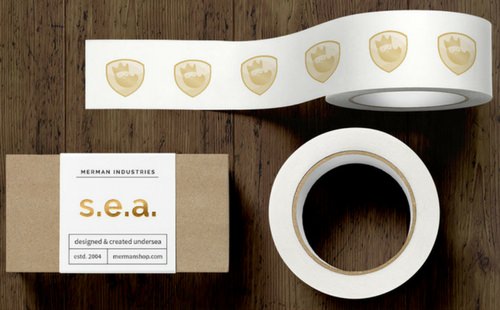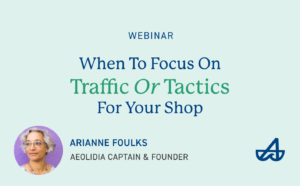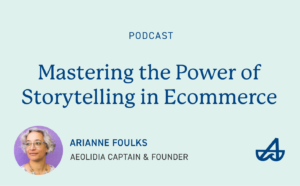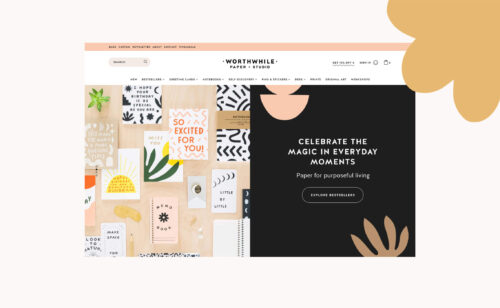What Do I Charge for Shipping? How to Choose a Shipping Rate Strategy for Your Shop

Shipping charges have a major impact on shopping cart abandonment in online shops. If you have big goals for your conversion rate, you have to be proactive about choosing a shipping rate strategy that makes customers happy while ensuring you’re not losing a ton of money on free or flat rate shipping.
Choosing a shipping rate strategy that works for your shop
There are two major factors that cause people to abandon carts over shipping charges.
- Not knowing what shipping will cost
- Thinking shipping is too expensive
You don’t have to jump immediately to free shipping to keep customers from leaving your site, you just want to pick a shipping rate strategy that is easy to understand and feels reasonable. If a customer is buying a bar of soap for $8, they might not want to pay $9.25 to have it shipped.
Let’s examine your options for dealing with customer skittishness around shipping.
Use a shipping calculator
With a shipping calculator, customers can provide their shipping details to get an estimate of shipping costs before checkout.
PROS
- Customers understand exactly what their shipping charge will be
- You pass the shipping charge on to the customer
CONS
- No shipping calculator is 100% accurate
- Shipping is expensive, so customers can still get sticker shock from shipping rates, leading to abandoned carts
For weekly tips like this, subscribe to our newsletter
"*" indicates required fields
Offer flat rate shipping
With flat rate shipping, you charge a single, uniform amount for shipping no matter where the customer is located or what they order. (You can offer a different flat rate for international orders.)
PROS
- Flat rate shipping is easy for customers to understand
- You make an extra margin on shipping small items that cost less to ship than the flat rate
CONS
- You can lose money for shipping single large items
- Customers don’t want to pay flat rate for small items
Offer free shipping over a certain order value
By offering free shipping on orders totaling more than a certain dollar amount, you encourage customers to order more. If customers don’t reach the free shipping tipping point, you can charge a flat rate for shipping or use a shipping calculator. You should aim to set the dollar amount of your free shipping threshold higher than your average order value (AOV), if you know it. This way you don’t give away free shipping on order totals you’d likely hit anyway, and over time, your shipping rate strategy can help increase your AOV.
PROS
- Customers might order more to for more savings
- Over time, your AOV increases as customers strive for free shipping
CONS
- You lose money on shipping for high-value orders, especially bulky ones
- If you sell high-priced items, it’s too easy for customer to hit your free shipping threshold
Offer free shipping on all orders
Free shipping is the clearest shipping rate strategy and the one that makes customers the most happy, but it leaves you eating all the shipping costs.
PROS
- Customers love free shipping, so your cart abandonment rates will stay low
- Conversion rates on sites that offer free shipping are typically higher
CONS
- You have to find a way to absorb shipping costs or lose money on shipping
- You can’t use “free shipping” as a sales incentive if you offer it all the time
Our favorite shipping rate strategy
After years of helping clients determine which shipping rate strategy they should use in their shop, we’ve hit on a favorite that seems to work for most shops most of the time.
We like the combination of offering free shipping on orders totaling slightly over your average order value, and combining that approach with a flat rate shipping on orders that do not meet the free shipping threshold.
Why this approach works
We’ve already talked about why offering free shipping over a certain dollar amount encourages shoppers to load up their carts to higher than your normal AOV (which is awesome for you). But by charging a reasonable flat rate for orders that don’t meet the threshold, you also encourage customers to add more to their cart as they try to get the most of the flat rate.
For example, let’s say you sell natural skincare products and you offer free shipping on orders over $75. You also offer a flat $8 shipping rate on orders that don’t meet the free shipping minimum. If a customer orders a tube of lip balm, she may not feel like an $8 shipping charge is fair. But knowing it’s flat rate means she can add items to her order without increasing the shipping charge, something that is not the case for calculated shipping. So she might add another item or two just to get the most perceived value out of a shipping charge she’s already paying.
How to track and measure shipping rate metrics
While we do have our favorite, there simply is no one-size-fits-all approach to shipping for e-commerce. It depends on what you sell, who your customers are, where they’re located, how loyal they are… too many factors to count!
Whatever shipping rate strategy you choose, you should track the following over a given time period:
- Your shipping costs
- What you charged for shipping
- What you made or lost on shipping
- Cart abandonment rate (especially from the shipping page)
- Overall site conversion rate
- Average order values
When you know these numbers, you can easily decide whether a particular shipping rate strategy is working. You might decide a lower conversion rate is okay if your average order values are increasing and you’re not losing money on shipping.
Now it’s your turn
We would love to hear about your struggles and approaches to choosing a shipping rate strategy in your shop! What has worked for you? What questions do you have?
A Newsletter That Goes Beyond Shopify 101
It’s easy to find beginner info about ecommerce online. If you’re past that? Subscribe to our newsletter for advanced strategies and need-to-know info for established shops. You'll get:
- Weekly tips to help you market and sell your products
- Updates when there is news that may impact your site
- Round ups of interesting links and info for brands
- Invites to our live trainings and webinars
- Instant access to our past emails
"*" indicates required fields
12 thoughts on “What Do I Charge for Shipping? How to Choose a Shipping Rate Strategy for Your Shop”
Leave a Comment
Related Posts
Let's take your online shop to the next level
The Shopify websites we design have a reputation for substantial improvements to ecommerce conversion rates and online sales. Let's talk!
















This is so good! Just forwarded by a peer. We are just about to launch!
I am losing quite a few orders at check out. My shipping rate is calculated by Shopify and I offer free shipping on orders of $100. Should I lower it? $100 would be the equivalent of two items on average. I think it’s fair and seems pretty standard on vintage.
Amazing article!! Exaclty what I’ve been debating! Thank you so much!
I decided on flat rate shipping when I setup my website. Since I sell inexpensive items, I know my customers don’t want to pay more for the shipping than the item itself! I never lose money on US shipping & usually increase my AOV a little. My international flat rate shipping prices are set higher than they should be. Sometimes I still lose money on International orders, but often a customer overpays a bit. Many of the abandoned carts I get are international buyers, so I think the flat rate shipping $ may be scaring them 🙁
Sandra — I would look at what your average order value is rather than average out the equivalent of 2 items. If your average order is around $60, perhaps offer free shipping on orders over $75 and see if you can push people to add another $15 to their total for free shipping. I do a lot of shopping online and $100 feels high to me — although I get it because I used to sell vintage online, too!
You might also think about offering a flat rate for shipping. I know it’s hard when you sell one-of-a-kind items. But I also know from experience what the sticker shock is with regard to how much shipping vintage items costs!
My best advice is always: test it out and see! Try a different shipping offer for the holidays and record the results.
So glad you are covering this. It’s been on my to do list for awhile. Thanks for the tips and advice. Now it’s time to put in action on my site.
Thank you! I will give it a try. I am willing to bring the threshhold down. It honestly isn’t by much. up to 1 lb. is usually between 5.25 and 7.50 for Priority Mail. . Should I make the flat rate 7? or 8 like your guide stated?
Also International shipping is usually very high. What do you recommend? I offer 1st class fro International because of the cost.
Great article, love how in depth you went. And some of these pros and cons I haven’t even considered. But I’m still pretty happy with my shipping rate strategy. I sell silver jewelry so here’s my strategy:
For US:
I offer free Priority Mail shipping for orders over $100
I offer a flat rate cost for First Class: $3 (I would love to only offer Priority Mail insured but about 90% of my US customers choose First Class).
And a flat rate cost for Priority Mail: $7
I also offer flat rate cost for First Class and Priority Mail for Canada and international (which are all different costs).
I want to offer the free shipping over a certain amount to my Canada + international customers but it would only work if I increased that amount threshold.
But even then, I wouldn’t feel comfortable sending uninsured packages out at that cost. So that threshold would have to be pretty high to cover $25 Priority Mail Canada and $33 for international.
This was a very helpful breakdown of possible ways to handle shipping. Thank you!
I have been using calculated Priority Mail shipping but am going to test out an offer of flat rate shipping as well as free shipping over a certain amount. I have calculated my average order value for 2017 and now have some actual data to help me choose a good value!
I’m so glad to hear this was helpful, Emily! Thanks for stopping by.
Yay! This is so helpful. I have been fearful of hitting LIVE on my online site due to shipping. So happy to have the two options and I think this will work perfectly! Thank you. I have been searching high and low for information like this. THANK YOU!
That’s awesome, I’m glad to hear this was helpful!